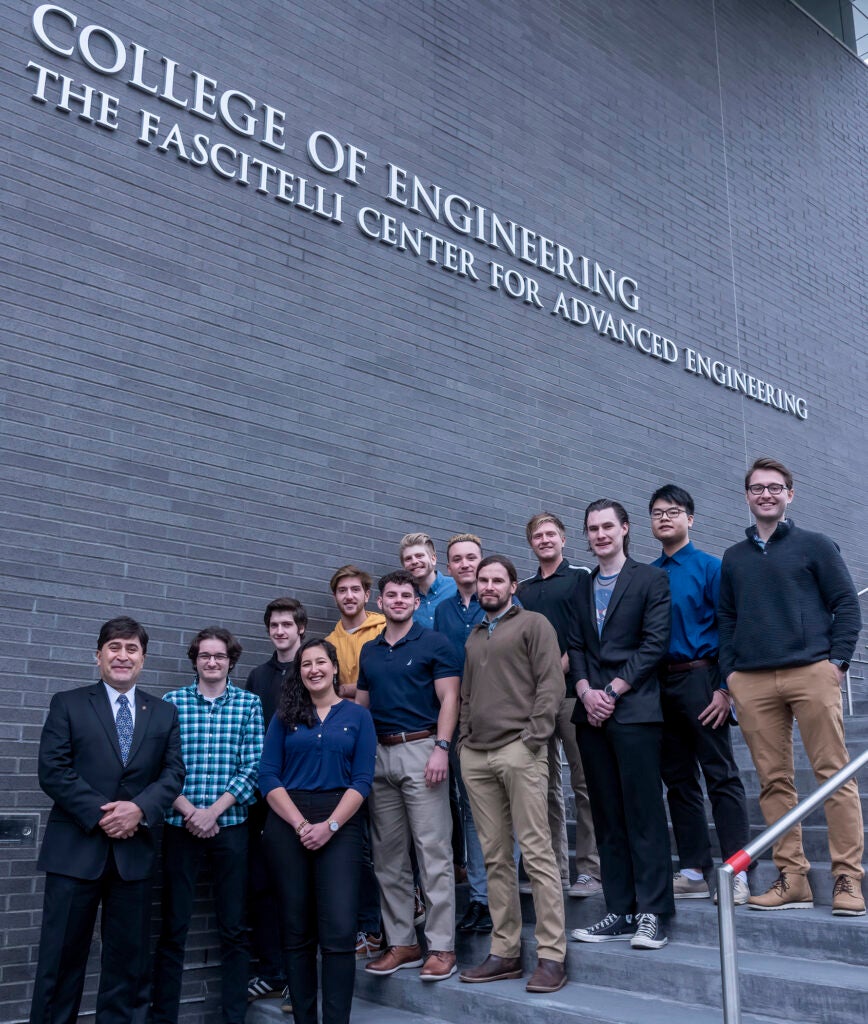KINGSTON, R.I. – Dec. 14, 2022 – A Distinguished University Professor of Mechanical, Industrial and Systems Engineering at the University of Rhode Island spoke today about the U.S. Department of Energy announcement earlier this week that fusion ignition had been achieved at its Lawrence Livermore National Laboratory.

The DOE said on Dec. 5, a team at the lab’s National Ignition Facility conducted the first controlled fusion experiment in history to reach this milestone, also known as scientific energy breakeven, meaning it produced more energy from fusion than the laser energy used to drive it. This historic, first-of-its-kind achievement will provide invaluable insights into the prospects of clean fusion energy, which would be a game-changer for efforts to achieve President Joe Biden’s goal of a net-zero carbon economy.
URI Professor Bahram Nassersharif, whose research includes nuclear systems, safety engineering and simulation and modeling, has published research on the failures of nuclear power plants, including Three Mile Island, and nuclear space reactor simulations.
Last year, he and his students in a senior URI engineering capstone class worked with NASA and other prestigious universities on a project involving nuclear thermal propulsion, which scientists and engineers said could get astronauts to Mars more quickly and safely than current chemical propulsion and technology.
The University’s Department of Communications and Marketing asked Nassersharif the following questions:
1. What were the key steps that led to the discovery?
This research and development at the National Ignition Facility at the Lawrence-Livermore National Laboratory have been a long-term effort. The continued improvements in the target design, enclosure, and laser targeting were among the factors that led to the achievement. Achieving fusion is not new and has been achieved previously. What was unique is that, for the first time, more energy was recovered than the amount of energy required to create fusion.
2. Current nuclear power relies on fission rather than fusion, can you explain the difference and why is fusion cleaner and more efficient? Is there any nuclear waste?
Fission is the process of a heavy nucleus such as U-235 absorbing a neutron resulting in a U-236 nucleus, which is highly unstable. U-236 quickly splits into two main nuclear fragments, some radiation, and two or three neutrons, which can then sustain the chain reaction. The fragments produced from fission are radioactive isotopes and some are long-lived. So, the spent nuclear fuel requires special handling and process for storage. Nuclear fusion is the process of fusing two heavy isotopes of hydrogen (deuterium and tritium) into helium-4 and a neutron. Deuterium is naturally in all hydrogen found on Earth (for example, the hydrogen in water) and can be extracted to be used as fusion fuel. Tritium is man-made in a nuclear reactor and can also be produced from the fusion nuclear reaction as well. So, fusion produces less radioactive isotopes that require special handling.
3. How soon do you predict that nuclear fusion will be commercially available to generate electricity, power our cars, etc.?
A fusion reactor for electrical power production is probably 20 to 30 years away because a significant amount of engineering is required to improve efficiency further, reduce costs, and compact the size.
4. How will this discovery affect your courses and your students? Will you incorporate information from this discovery as soon as you are able?
I already cover fusion in my courses on Power Plant Design and Safety Analysis and Space Nuclear Propulsion and Power. I discussed this new achievement with my last class of the fall semester yesterday!
5. What else should the public know about this major discovery?
That our future long-term energy needs could be met with nuclear fusion. The Deuterium supply is expected to last 1,000,000,000,000 years in ocean waters.
6. At this point, would you say that this is the 21st century’s top scientific discovery so far?
Fusion is not a new discovery. Fusion was first utilized in hydrogen bombs in the 1960s. Fusion in the laboratory has been under development for the past 50 years. What was unique in this latest achievement was that more energy was produced than the amount of energy required to cause fusion. It is a step along the way but a significant one!
